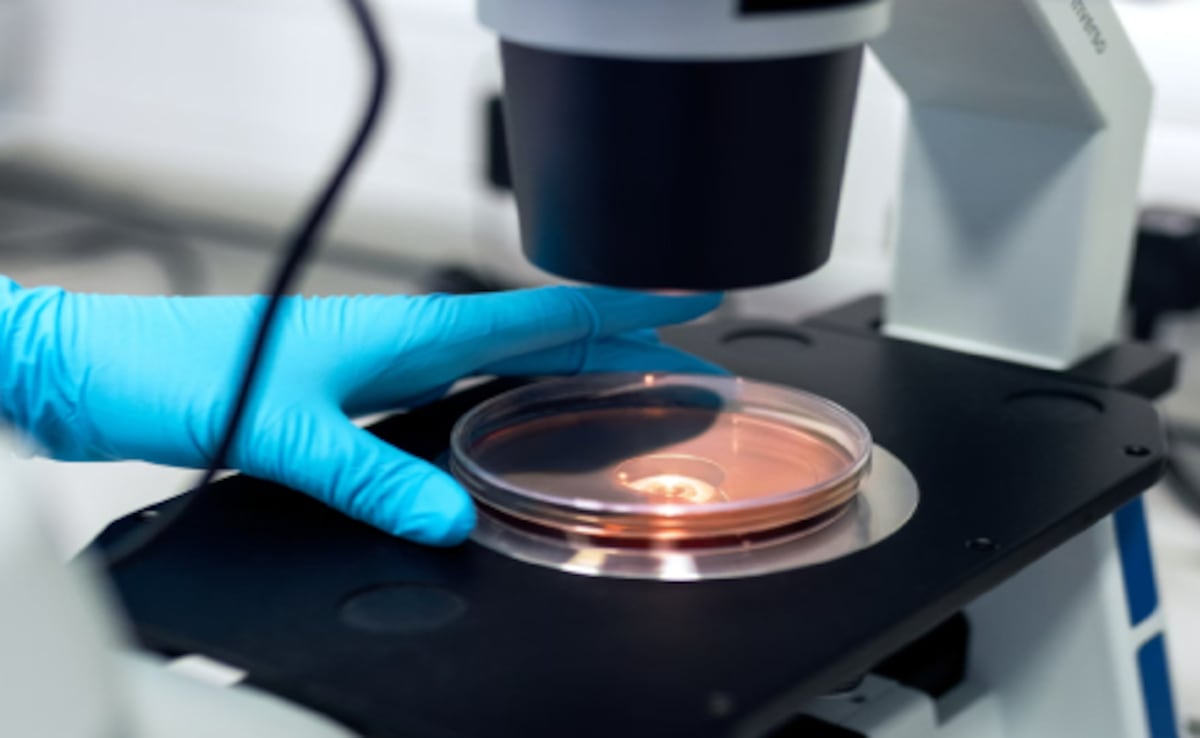2024-08-26 07:01:20

The new research focused on a particular protein used by bacteriophages (representational).
As the globe faces a rise in antibiotic-resistant bacteria – making traditional antibiotics ineffective – specific viruses could offer a solution.
Viruses called bacteriophages, or phages, target bacteria but can’t infect humans or other higher organisms. Phages inject their DNA into the bacterial cell, multiply to large numbers using the resources of the host, and then burst out to infect more bacteria in the vicinity.
Essentially, they are a naturally occurring, self-replicating and specific antibiotic. Discovered more than 100 years ago, their use against bacteria was largely sidelined in favour of antibiotics.
Our new research looked at one particular protein used by phages to bypass the natural defences of bacteria. We found this protein has an essential control function by binding to DNA and RNA.
This increased understanding is an important step towards using phages against bacterial pathogens in human health or agriculture.
Bacterial defence systems
There are hurdles to using phages to target bacteria. Much like our bodies have immune mechanisms to fight off viruses, bacteria have also evolved defences against phage infections.
One such defence is “clustered regularly interspaced short palindromic repeats”, or CRISPR, now better known for its applications in medicine and biotechnology. CRISPR systems in general act as “molecular scissors” by cutting DNA into pieces, be it in a lab-based setting or, in nature, inside a bacterium to destroy a phage.
Imagine wanting to use a phage against an antibiotic-resistant bacterial infection. The only thing standing in the way of that phage killing the bacteria and eradicating the infection might be the bacterium’s CRISPR defence which renders the phages useless as an antimicrobial.
That’s where knowing as much as possible about phage counter-defences becomes important. We are investigating so-called anti-CRISPRs: proteins or other molecules that phages use to inhibit CRISPR.
A bacterium that has CRISPR might be able to stop a phage from infecting. But if the phage has the right anti-CRISPR, it can neutralise this defence and kill the bacterium regardless.
The importance of anti-CRISPRs
Our recent research focused on how an anti-CRISPR response is controlled.
When faced with a powerful CRISPR defence, phages want to automatically produce large amounts of anti-CRISPR to increase the chance of inhibiting CRISPR immunity. But excessive production of anti-CRISPR prevents the replication of the phage and is ultimately toxic. This is why control is important.
To achieve this control, phages have another protein in their toolbox: an anti-CRISPR-associated (or Aca) protein that frequently occurs alongside the anti-CRISPRs themselves.
Aca proteins act as regulators of the phage’s counter-defence. They make sure the initial burst of anti-CRISPR production that inactivates CRISPR is then rapidly dampened to low levels. That way, the phage can allocate energy to where it is most needed: its replication and, eventually, release from the cell.
We found this regulation occurs at multiple levels. For any protein to be produced, the gene sequence in the DNA first needs to be transcribed into a messenger–RNA. This is then decoded, or translated, into a protein.
Many regulatory proteins function by inhibiting the first step (transcription into messenger-RNA), some others inhibit the second (translation into protein). Either way, the regulator often acts as a “road block” of sorts, binding to DNA or RNA.
Intriguingly and unexpectedly, the Aca protein we investigated does both – even though its structure would suggest it is merely a transcriptional regulator (a protein that regulates the conversion of DNA to RNA), very similar to ones that have been investigated for decades.
We also examined why this extra-tight control at two levels is necessary. Again, it seems to be all about the dosage of the anti-CRISPRs, especially as the phage replicates its DNA in the bacterial cell. This replication will invariably lead to the production of messenger-RNAs even in the presence of transcriptional control.
Therefore, it appears additional regulation is required to reign in anti-CRISPR production. This comes back to the toxicity of excessive production of this counter-defence protein, to the harm done when there’s “too much of a good thing”.
Fine-tuned control
What does this research mean in the grand scheme of things? We now know a lot more about how anti-CRISPR deployment occurs. It requires fine-tuned control to enable the phage to be successful in its battle against the host bacterium.
This is important out in nature, but also when it comes to using phages as alternative antimicrobials.
Knowing every detail about something as obscure-sounding as anti-CRISPR-associated proteins might make all the difference between the phage succeeding or succumbing —and between life or death, not just for the phage, but also for a person infected with antibiotic-resistant bacteria.![]()
Nils Birkholz, Postdoctoral Fellow in Molecular Microbiology, University of Otago
This article is republished from The Conversation under a Creative Commons license. Read the original article.
(Except for the headline, this story has not been edited by NDTV staff and is published from a syndicated feed.)
Virus,antibiotic,Bacteriophages
Source link
![]()
